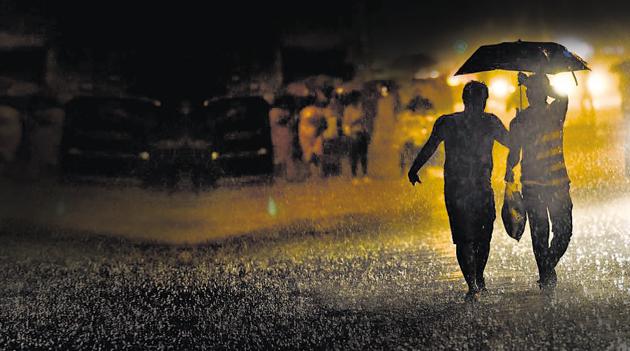Scientists have found a new factor in the Indian Ocean that influences the monsoon
A study by Japan Agency for Marine-Earth Science and Technology (JAMSTEC) has found a phase that was not understood previously of the Indian Ocean Dipole
Scientists have found a new factor that influences the Indian monsoon. A study by Japan Agency for Marine-Earth Science and Technology (JAMSTEC) has found a phase that was not understood previously of the Indian Ocean Dipole (IOD) — a climatic phenomenon used to forecast rains — which influences the southwest monsoon.

The IOD is an ocean-atmosphere phenomenon in the tropical Indian Ocean characterised by a difference in sea-surface temperatures.
The study, analysed the Indian Summer Monsoon Rainfall (ISMR) in the months of June and September between 1982 and 2016 and found that negative phases of IOD result in good rainfall over different regions — similar to positive IOD. Scientists so far have perceived that opposite phases of the IOD have opposite effects on the ISMR.
Scientists said the study will improve prediction of rainfall patterns, helping seasonal forecasters, planners and social sectors dependent on monsoon rains particularly agriculture, water management and disaster management.
“Rainfall triggered by the Indian Ocean Dipole phenomenon over the Indian landmass is not uniform. Based on the study findings, if we can correctly incorporate the teleconnections between the IOD and ISMR into our climate models, we will be able to give better monsoon predictions. Phase two of the monsoon mission will include this aspect. Right now, we are not getting this teleconnection right in the models,” said Suryachandra A Rao, associate director, Monsoon Mission which is under the ministry of earth sciences (MoES), who was not involved in the study.
In a positive IOD, moisture from the sea strengthens the monsoon trough, resulting in abundant rainfall around the monsoon trough region, but below normal rainfall south and north of the trough. In a negative IOD, fluctuations in monsoon winds and moisture distribution, plus air circulation over the South China Sea, results in above normal rainfall on the western part and below normal on the eastern part.
“The general insight was that the ISMR is below normal during a negative IOD, which was based on a perception of the monsoon’s positive response during a positive IOD,” said Swadhin Behera, director, Application Laboratory, JAMSTEC, in an email interview. “Our study has clearly demonstrated that the ISMR responses to the opposite phases of the IOD are not necessarily opposite to each other.”
The study analysed eight positive IOD years – 1982, 1994, 1997, 2003, 2007, 2008, 2012, 2015, and five negative IOD years: 1992, 1996, 1998, 2013, and 2016. The team found good rainfall in different regions during both positive and negative IOD phases. “The spatial distinction arises from the differences in the atmospheric responses and moisture transports to the region during contrasting phases of the IOD,” said Behera.
Results show that the western half of India receives above normal rainfall covering a wider region from south to north during a negative IOD and below normal rainfall over the eastern half of the country. On the other hand, a positive IOD caused above normal rainfall in central parts of India stretching from western to eastern states, and below normal rainfall to the north and south of this region. North-eastern states however suffer from below normal rainfall during both phases of IOD.
The central-western part of India, the region of seasonal monsoon trough, records above normal rainfall in both phases of the IOD. It is however not the same case to the south and the east of the monsoon trough region. “These similar and dissimilar responses arise due to the relationship between weather or climate patterns at two widely separated locations, and moisture distributions over India during the opposite phases of the IOD,” states the study.
“This distinction in the spatial pattern of the precipitation (rainfall) distribution in response to negative IOD will help planners to prepare for flooding or drought events over the affected regions,” said JV Ratnam, senior scientist, JAMSTEC.
The study ‘Quasi-asymmetric response of the Indian summer monsoon rainfall to opposite phases of the IOD’ was published in Nature Scientific Reports on January 9. The MoES has a collaboration with the Japanese national research institute.
Relationship between El Nino Southern Oscillation, Indian Ocean Dipole and Indian Summer Monsoon Rainfall
The Indian Ocean Dipole phenomenon is understood to be similar to the El Nino Southern Oscillation cycle in tropical Pacific Ocean, which is the dominating mode of climate variability and historically linked with good and bad years of Indian summer monsoon. The warming of the Pacific Ocean (El Nino) results in deficient monsoon in India, while cool sea surface temperatures (La Nina) ensue above normal rainfall over the country.
“However, this historical association between ENSO and ISMR has changed in recent years owing to frequent occurrences of IOD. IOD often reduces the effect of ENSO on the Indian monsoon when both IOD and ENSO occur together,” said Swadhin Behera, director, Application Laboratory, JAMSTEC.
In 1997, the monsoon remained close to normal when positive IOD coincided with a record breaking El Nino year even though rainfall was predicted to be below normal.




